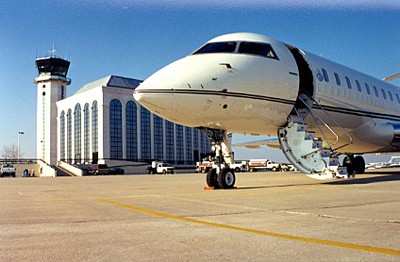Mon, Aug 28, 2023
Funding Aims to Enhance, Standardize Airport Layouts to Eliminate Near-Accidents
The FAA announced the next batch of recipients to gain funding for improved taxiways, lighting systems, and airport accouterments in an effort to reduce runway incursions after a rash of high-profile incidents.

The money will come from the FAA’s Airport Improvement Program and the recent infrastructure law. Winners of the funding include Ted Stevens Anchorage International, in Alaska; Willow Run Airport of Detroit, Michigan; Boston Logan International, in Massachusetts; Naples International in Florida; Jackson Hole Airport, in Wyoming, Richmond International, in Virginia;, Eugene F Kranz Toledo Express, in Ohio, and Ronald Reagan Washington National, in Washington DC.
Anchorage will get almost $40 million to redesign the geometry of its taxiways and runway intersections, as well as improve lighting systems for low visibility conditions. Additional improvements will lengthen and widen some taxiways in order to meet the needs of larger modern aircraft using them. Detroit will see $12.8 million for a new taxiway, obviating back taxi needs for its main runway. Boston will get almost $45 million to simplify their layout, too, following the airport’s runway incursion mitigation plan. The work will also improve and overhaul existing taxiways and runways to reduce FOD and improve runway durability. Naples will get a more modest $3.5 million to revise Taxiway A’s intersection with B to fall in line with standardized intersection standards, with 3,000 feet of service roads to be reconstructed for better vehicle flow. Jackson Hole will get $2.6 million for a new taxiway in order to eliminate back-taxiing, with the rest going to rehab Taxiway A for structural
integrity and FOD reduction. Richmond will see $5.6 million to shift a taxiway North in order to meet modern FAA design standards.Toledo will get $4.6 million in order to shift a taxiway and rehabilitate a whole bunch of its own, not just to eliminate FOD risks but to reduce the amount of standing water building up on airport surfaces from rain and snowmelt. Finally, Washington DC will get $5 million to build a new connecting taxiway between Runways 1/19 and 15/33 in order to expedite traffic, while reconfiguring a handful of runways and holding bays to meet modern standards.
More News
Pilot Also Reported That Due To A Fuel Leak, The Auxiliary Fuel Tanks Were Not Used On June 4, 2025, at 13:41 eastern daylight time, a Piper PA-23, N2109P, was substantially damage>[...]
Have A Story That NEEDS To Be Featured On Aero-News? Here’s How To Submit A Story To Our Team Some of the greatest new stories ANN has ever covered have been submitted by our>[...]
From 2023 (YouTube Edition): Reflections on War’s Collective Lessons and Cyclical Nature The exigencies of war ought be colorblind. Inane social-constructs the likes of racis>[...]
Aero Linx: Colorado Pilots Association (CPA) Colorado Pilots Association was incorporated as a Colorado Nonprofit Corporation in 1972. It is a statewide organization with over 700 >[...]
High Speed Taxiway A long radius taxiway designed and provided with lighting or marking to define the path of aircraft, traveling at high speed (up to 60 knots), from the runway ce>[...]
 NTSB Prelim: Piper PA-23
NTSB Prelim: Piper PA-23 ANN FAQ: Submit a News Story!
ANN FAQ: Submit a News Story! Classic Aero-TV: One Mans Vietnam
Classic Aero-TV: One Mans Vietnam ANN's Daily Aero-Linx (07.03.25)
ANN's Daily Aero-Linx (07.03.25) ANN's Daily Aero-Term (07.03.25): High Speed Taxiway
ANN's Daily Aero-Term (07.03.25): High Speed Taxiway



